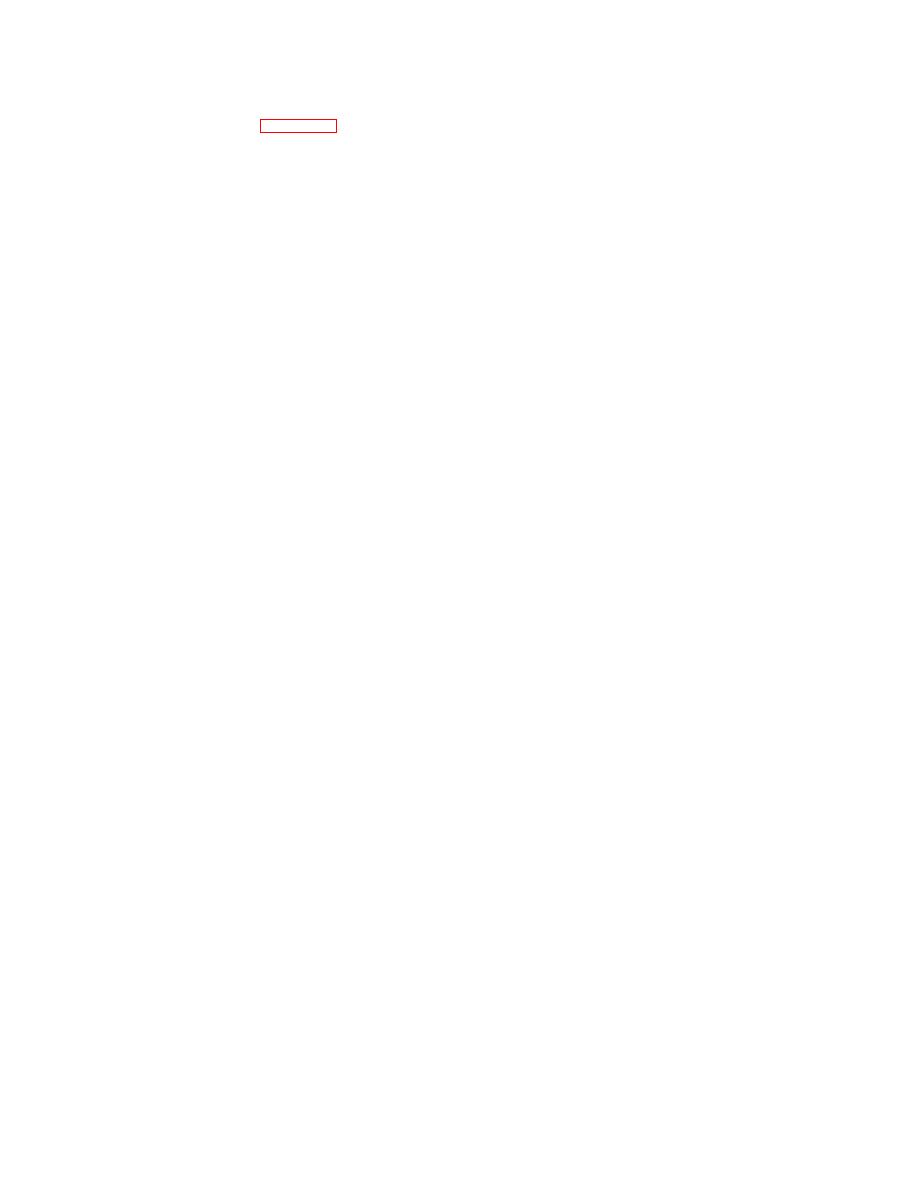
| Tweet |

Custom Search
|
|

|
||
 (2) Use a puller to remove the oil pump drive gear (5) from crankshaft. Remove key (6).
(3) Remove dowel pins (7) from crankshaft.
c. Cleaning.
(1) Clean the crankshaft and gears with cleaning solvent (FED. SPEC. PD-680) and dry thoroughly.
(2) Remove plugs, (1, figure 3-97) from crankshaft and clean out all oil passages thoroughly.
d. Inspection and Repair. Used crankshafts will sometimes show a certain amount of ridging caused by the groove
in the upper main bearing shell. If this ridge is not removed before new bearing shells are installed, localized high unit
pressures on the bearings will result during engine operation. A ridge exceeding .0002 inch or more must be removed.
(1) Support the crankshaft on its front and rear journals in V-blocks or in a lathe.
(2) The ridges may be removed by working crocus cloth, wet with fuel oil, around the circumference of the
crankshaft journal. Rotate the crankshaft frequently to eliminate an out-of-round condition. If the ridges are greater than
.0005 inch, first use 120 grit emery cloth to clean up the ridge, followed by the use of 240 grit emery cloth for finishing.
Then, wet crocus cloth should be used for the polishing operation. If the ridges are greater than .001 inch, the crankshaft
may have to be replaced and the used crankshaft reground at depot.
(3) Measure all of the main and connecting rod gearing journals. The journals should be measured at several
places on the circumference in order to determine the smallest diameter, in case the journals have worn out-of-round.
Taper on the journals of a used shaft should not exceed .0015 inch, and out-of-round should not exceed .0010 inch. (The
maximum taper on a new shaft is .0005 inch and the maximum out-of-round is (.0025 inch.) Excessive taper or out-of-
round indications require that the crankshaft be replaced.
(4) Check the alinement at the adjacent intermediate journals using a dial indicator. When runout on adjacent
journals is in the opposite direction, the sum must not exceed .003 inch total indicator reading. When runout on adjacent
journals is in the same direction, the difference must not exceed .003 inch total indicator reading. The crankshaft must
also be replaced if the runout limit is greater than: .002 inch on journal number 2; .004 inch on number 3; .006 inch on
number 4; .004 inch on number 5; .002 inch on number 6.
NOTE
Crankshaft failures are rare and, when one cracks or breaks completely, it is very important
to make a thorough inspection for contributory factors. Unless abnormal conditions are
discovered and corrected, there will be a repetition of the failure.
(5) Check thrust surfaces for evidence of excessive wear or roughness. In many instances, only slight grinding or
"dressing up" of the thrust surface is necessary. In such cases, use of new standard thrust washers will probably hold the
end thrust clearance within the specified limits of .004 inch to .011 inch for new parts or a maximum of .018 inch with a
used crankshaft.
(6) Inspect the keyways for evidence of cracks or worn condition, and replace the shaft if necessary.
(7) Carefully inspect the crankshaft in the area of the rear oil seal contact surface for evidence of rough or grooved
condition. Any imperfections of the oil seal contact surface will result in oil leakage at this point.
e. Reassembly. Reassemble the crankshaft in reverse order of disassembly (b above).
f. Installation. Install the crankshaft in reverse order of removal (a above).
3-29. Camshaft and Balance Shaft
a. General. If the transmission and flywheel housing have been removed, the camshaft and balance shaft can be
removed from the rear of the engine. They can also be removed from the front of the engine by using a special adapter
plate and gear puller. This method eliminates the requirement for transmission and flywheel housing removal.
b. Removal (Transmission and Flywheel Housing Removed).
(1) Remove bolts and washers shown in figure 3-98 and remove the balance weight cover.
3-140
|
||
 |
||